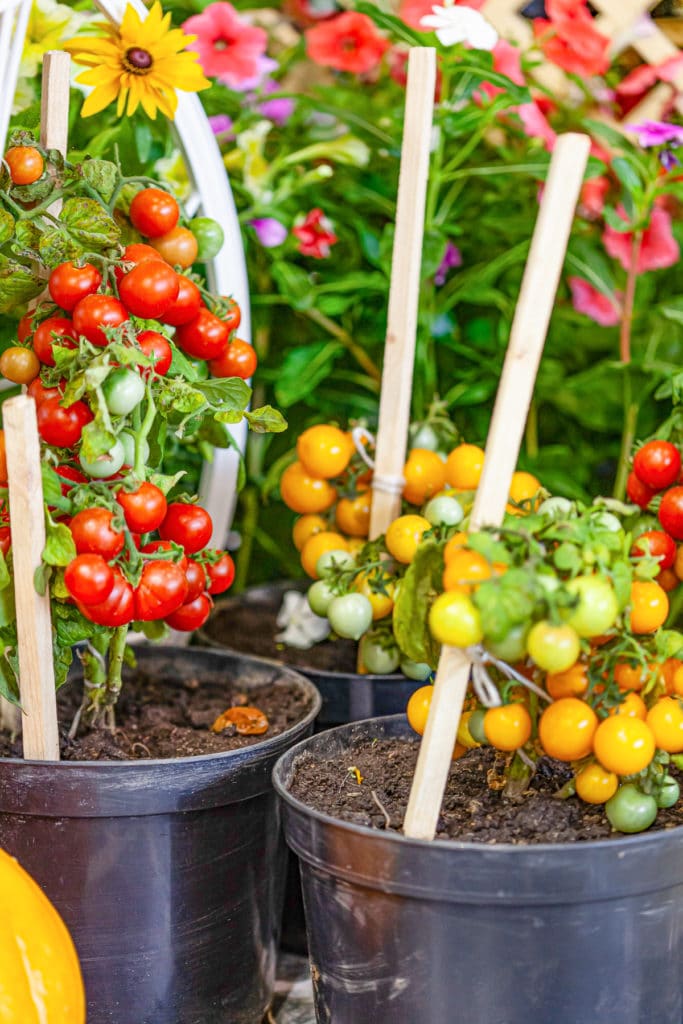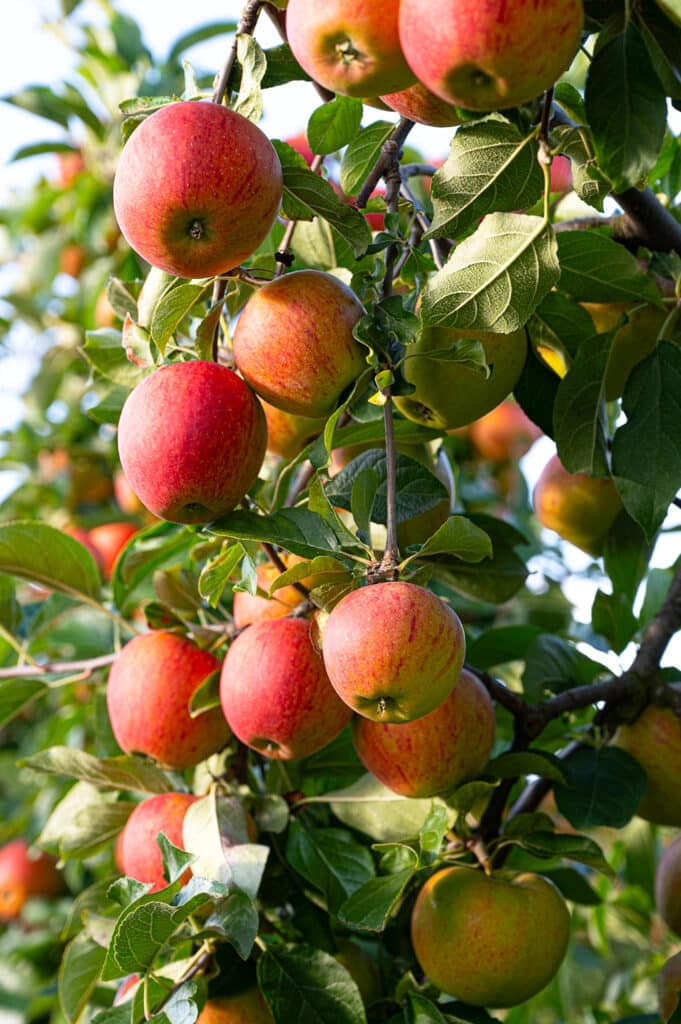10 Most Profitable Crops for Farmers’ Markets (& Smart Selling Tips)
Where we live, it’s a hotspot for farmers’ markets, filled with fresh produce, handmade goods, and passionate vendors. But success at the market isn’t just about growing great food—it’s about developing what sells. Before planting a single seed, we spent months researching: visiting markets, talking to vendors, and analyzing which products flew off tables and which lingered. That research gave us better direction on what to plant and an understanding of what the most profitable crops for farmers’ markets were in our area.
Planning is key if you’re considering selling at your local farmers’ market. It’s easy to grow what you love, but will customers love it too? While every market is unique, some trends are universal. In this guide, we’ll cover:
- How to do a bit of research to better understand your local farmers market’s potential
- Common mistakes to avoid when growing for farmers’ markets
- Innovative selling strategies to maximize profits
- Sustainable packaging and branding solutions
By the end, you’ll have a clear plan for turning your garden into a profitable, sustainable farmers’ market business.

Understanding Your Local Market: Research Before You Plant
Before planting anything, you must understand your customers’ buying habits. Farmers’ markets vary widely based on location, demographics, and seasonality. What sells out in one region may barely move in another.
Observe What Sells (and What Doesn’t)
The best way to research your market is to visit it regularly. Pay close attention to:
- Best-selling products – What sells out quickly, and what’s left over at the end of the day?
- Pricing – Are customers willing to pay premium prices for organic or specialty produce?
- Gaps in supply – Is there a demand for something no one is growing?
- Customer behavior – Do they buy in bulk or prefer small portions?
- Vendor success – Which stalls attract the most customers? How do they display their goods?
Quick Win: If a vendor sells out of something before noon, it’s a high-demand item. If it lingers until closing, reconsider growing it.
Talk to Vendors and Learn from Their Experience
Experienced vendors are often open about what works and what doesn’t. Strike up conversations and ask about:
- Which crops are their biggest sellers
- How pricing strategies affect sales
- Unexpected challenges they faced when starting
While not every vendor will share trade secrets, many are happy to give insights that can help newcomers avoid costly mistakes.
Identify Gaps in the Market
If every vendor is selling tomatoes, the market may already be saturated. But if no one offers specialty greens or unique heirloom varieties, there might be an opportunity to fill a niche.
Consider:
- Offering different varieties (e.g., heirloom tomatoes instead of standard ones)
- Growing out-of-season produce using greenhouses or tunnels
- Selling high-demand crops like fresh herbs, which are easy to grow and have high turnover
Quick Win: Overcrowded markets mean lower prices. Find a niche crop no one else is growing, and you’ll avoid price wars.
Match Your Crops to Your Growing Capabilities
Not every profitable crop is the right fit for your garden. Before committing, ask yourself:
- Space requirements – Do you have room for sprawling crops like squash, or should you focus on high-yield, compact options like salad greens?
- Climate adaptability – Will heat-loving crops thrive in your region?
- Time investment – Some crops, like tomatoes, require staking, pruning, and pest management, while others, like radishes, need minimal care.
The best crops for you will be the ones that fit both your growing conditions and your lifestyle.
Quick Win: Avoid “diva crops” that need constant care. Start with easy, high-turnover options like salad greens, radishes, or basil.

Most Profitable Crops to Grow for Farmers Markets
Selecting the right crops is crucial if you want to succeed at a farmers’ market. High-value crops should be in demand, visually appealing, easy to grow in your climate, and offer a strong return on investment. The best options provide a steady supply, command premium prices, or cater to niche markets that grocery stores can’t match. Below are some of the most profitable crops to grow and why they stand out.
Quick Win: The fastest way to make money? Grow high-turnover crops like microgreens, salad mixes, and fresh herbs. They sell out weekly!
1. Specialty Greens & Salad Mixes
- Why They Sell: Fresh, local greens are a staple at farmers’ markets because they taste better and last longer than store-bought alternatives. They also have a short growing cycle, allowing multiple harvests per season.
- Best Picks: Arugula, baby spinach, mustard greens, mesclun mixes.
- Bonus: Some customers prefer spicy or bitter greens, making mustards and chicories an excellent option for variety.
2. Heirloom & Unusual Vegetables
- Why They Sell: Customers love variety and uniqueness, and heirloom vegetables stand out visually and in flavor. Many are willing to pay extra for something they can’t find in a supermarket.
- Best Picks: Purple carrots, striped tomatoes, watermelon radish, blue pumpkins.
- Bonus: These veggies often have interesting stories behind them, making them great conversation starters at your stall.
Quick Win: Customers love a good story. If your heirloom tomatoes came from your grandmother’s seeds, tell that story—it will make them irresistible!

3. High-Value Culinary & Medicinal Herbs
- Why They Sell: Herbs are compact and easy to grow. They can be sold fresh, dried, or as value-added products like infused oils and teas. Customers appreciate high-quality, locally grown herbs, which are fresher than grocery store options.
- Best Picks: Basil, cilantro, rosemary, lavender, thyme.
- Bonus: Perennial herbs like thyme and rosemary provide multiple harvest seasons with minimal maintenance.
4. Berries & Small Fruits
- Why They Sell: Nothing beats the flavor of freshly picked local berries. Customers know store-bought berries are often bland and travel poorly, making farmers’ market options a premium choice.
- Best Picks: Strawberries, raspberries, blackberries, currants.
- Bonus: High demand allows for a premium price per pound, and berries can be sold fresh, frozen, or made into jams and preserves.
Quick Win: Berries = premium pricing. At farmers’ markets, they sell for up to 2-3x grocery store prices—and customers don’t blink.
5. Cut Flowers & Edible Flowers
- Why They Sell: Flowers brighten a market stall and attract impulse buyers. Edible flowers also appeal to chefs and health-conscious consumers looking for natural garnishes.
- Best Picks: Sunflowers, zinnias, dahlias, snapdragons, nasturtiums, violas.
- Bonus: A visually striking display draws in foot traffic, increasing sales for all your products.

6. Microgreens & Sprouts
- Why They Sell: These crops are nutrient-dense, trendy, and popular with health-conscious shoppers and chefs. They grow quickly and require little space, making them highly profitable.
- Best Picks: Pea shoots, radish greens and sunflower microgreens all have exceptional nutritional profiles which make great selling points.
- Bonus: Microgreens can be harvested in under two weeks, allowing for rapid turnover and consistent income.
7. Garlic & Specialty Onions
- Why They Sell: Garlic is a high-value crop that stores well, making it easy to sell year-round. Specialty onions, like shallots and cipollini onions, are sought after by chefs and home cooks alike.
- Best Picks: Hardneck garlic, elephant garlic, shallots, cipollini onions.
- Bonus: Garlic scapes (the curly green tops) provide an additional early-season crop before bulbs are harvested.
Quick Win: Garlic is a one-and-done crop: plant in fall, harvest in summer, and enjoy sales all year. Low effort, high reward!
8. Gourmet Mushrooms
- Why They Sell: Specialty mushrooms are hard to find fresh, making them a perfect farmers’ market item. They appeal to chefs, health-conscious shoppers, and gourmet home cooks.
- Best Picks: Oyster mushrooms, lion’s mane, shiitake.
- Bonus: They can be grown indoors year-round, providing a steady income stream.

9. Value-Added Products (From Your Crops)
- Why They Sell: Customers love the convenience and unique offerings. Value-added products increase shelf life and allow for creative branding.
- Best Picks: Dried herbs, spice blends, pickles, infused vinegar, flavored honey.
- Bonus: They allow you to maximize profits from surplus or imperfect produce.
Quick Win: Sell dried blends, infused oils, or herbal teas to turn $3 worth of herbs into a $15 product.
10. Unique Root Vegetables
- Why They Sell: Root vegetables are staple crops, but unique varieties stand out and command higher prices. Many are long-storing, reducing waste.
- Best Picks: Chioggia beets, rainbow carrots, sunchokes, Japanese sweet potatoes.
- Bonus: They have excellent storage potential, allowing for year-round sales.
Quick Win: Want to maximize sales? Track what sells each week and adjust your crops accordingly—data beats guessing.
Sustainable Packaging & Branding
Today’s customers are looking for more than great food—they also care about sustainability. The right packaging can reinforce your brand, reduce waste, and attract eco-conscious shoppers. Here are some alternatives to single-use plastics that keep your produce fresh while maintaining a professional presentation.
Quick Win: Customers remember brands that feel “premium.” Eco-friendly packaging makes you stand out and justifies higher prices.
Eco-Friendly Packaging Alternatives
- Compostable Produce Bags: Made from plant-based materials, these break down naturally and offer a great alternative to plastic.
- Paper Bags & Kraft Boxes: A simple, rustic look that aligns well with a natural brand image. It is ideal for greens, herbs, and baked goods.
- Reusable Mesh or Cotton Bags: Encourage all your customers to bring these back each week for refills, reducing waste and creating brand loyalty.
- Glass Jars for Value-Added Products: Perfect for honey, pickles, dried herbs, and jams. These can be reused by customers and reinforce a premium product feel.
- Recyclable & Compostable Clamshells: Great for berries, microgreens, and delicate produce while ensuring they stay fresh.
Maintaining Branding Consistency
A polished, professional appearance can set your market apart and create customer trust. Consider these branding elements:
- Custom Stamps & Stickers: Use compostable stickers or hand-stamped paper bags with your logo instead of plastic labels.
- Branded Reusable Totes: Sell or give away reusable bags with your farm’s logo, turning customers into walking advertisements.
- Chalkboard Price Signs & Wooden Displays: Aesthetic and waste-free, reinforcing a handcrafted, eco-friendly image.
Where to Buy Sustainable Packaging
Here are a few suppliers offering eco-friendly market packaging:
- EcoEnclose: Compostable mailers, recycled paper bags, and sustainable stickers.
- NoIssue: Custom compostable packaging and branding materials.
- PacknWood: Biodegradable and recyclable food packaging solutions.
Final Thoughts: Profitable Crops for Farmers Markets
Selling at a farmers’ market isn’t just about growing food—it’s about growing smart. By choosing high-value crops, tracking what sells, and using sustainable packaging, you can build a profitable, professional market stand that customers love returning to.
Which crops are you most excited to grow for the market? Drop a comment, and let’s talk strategy!
Pin this guide for later use in planning your most profitable market garden!

Author: Laura Kennedy
Writer & Owner of Little Yellow Wheelbarrow
Laura is a highly skilled gardener and fervent flower enthusiast. Despite her playful battle with plant spacing guidelines, Laura’s work inspires gardeners to create thriving, beautiful spaces that reflect both creativity and sustainability.
















